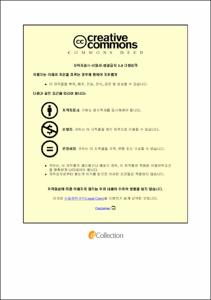Ulsan Univ. Repository
Thesis
General Graduate School
Computer Engineering & Information Technology
1. Theses(Master)
Continuous pumping for a gradient tendon-muscle engineering
- Abstract
- 주로 고강도 운동이나 운동으로 인해 부상이 발생하는 우리 몸의 가장 약한 지점으로 두 조직의 접점이 꼽힌다. 이러한 예들 중 하나는 힘줄과 근육 사이의 계면 영역인 근간 접합부(MTJ)이다. 조직 공학은 재생을 위한 표적 조직을 만들기 위해 조직 특정 세포와 생체 적합 물질을 사용하는 것을 목표로 한다. 그러나 고급 단일 조직을 만든다고 해서 기존 단백질뿐만 아니라 기계적 특성으로 주어진 계면의 복잡한 구조로 인해 수술 후 다시 발생할 수 있기 때문에 계면 손상 문제가 해결되지는 않는다. 우리 몸에서 MTJ의 그레이디언트(gradient) 특성은 MTJ에 대한 대부분의 최근 연구가 복제에 실패하거나 오히려 복잡한 시스템을 사용하는 근육에서 뼈로 가는 힘 압력을 줄이는 데 도움이 된다. 따라서 이 경사 계면 조직을 만드는 것은 힘줄-근육 단위의 기능을 재생하기 위해 필요하다. 본 연구에서는 간단하고 접근 가능한 장치를 사용하여 다양한 대상에 적합한 매개 변수를 변경할 수 있는 경사 힘줄-근육 스캐폴드(Scaffold)를 제작하여 연속 압출 기술을 제안한다. 이 장치에는 세 개의 모세혈관이 들어 있는데, 두 개의 입구는 수직이고, 한 개의 입구는 플라스틱 튜브로 연결되었다. 바이오 잉크는 힘줄과 근육 조직에서 유래한 콜라겐과 탈세 포화된 세포외 매트릭스(dECM)를 혼합하여 만들어졌다. 이 방법으로, 세포 증식과 분화를 돕기 위해 조직 특이적 단백질이 제공되었다. 그리고 나서, 인간 세포, 즉 장세포와 근육 세포를 인쇄하기 전에 조직 고유의 바이오 잉크에 조심스럽게 섞었습니다. 펌프 속도는 순차적으로 프로그래밍된 두 주사기 펌프 모두에 대해 10 uL/min으로 설정되었습니다. 구성당 인쇄 시간은 4분입니다. 그 후, 스캐폴드(Scaffold)를 인큐베이터(5% CO2 및 37°C)에 10~15분 동안 보관하여 인쇄 후 겔화가 가능하도록 하였다. 스캐폴드 (Scaffold)는 배지에서 1일 동안 배양한 후 분화로 이동한 후, 추가 검사를 위해 1일째와 7일째에 채취하였다. Cell Tracker 용액으로 두 가지 유형의 세포를 사전 염색함으로써, 우리는 인쇄 후 세포 위치를 모니터링하고 힘줄, 근육 및 근긴장 접합이라는 세 개의 구역으로 이루어진 그레이디언트(gradient) 힘줄-근육 비계를 성공적으로 제작할 수 있었다. 이것은 두 가지 유형의 세포 사이의 그레이디언트 (gradient) 전환이다. 힘줄과 근육 모두에 대한 비계의 세포 생존력은 1일 및 7일 배양 후 95% 이상의 영상을 통해 관찰되었다. 전기자극 실험은 근육 조직의 분화를 증가시키기 위한 목적으로 시작되었다. 그 결과, 자극 그룹의 골격근 세포는 자극되지 않은 그룹에 비해 더 정렬되고 빽빽하게 채워진 근관을 형성했다.
주요어: 힘줄 공학, 근육 공학, 인터페이스 공학, 그레이디언트 (gradient) 비계, 탈세 포화된 세포 외 매트릭스.
|The interface between two tissues is considered the weakest point in our body, where injuries usually happen due to high-intensity exercise or doing sports. One of these examples is the myotendinous junction (MTJ), an interfacial zone between tendon and muscle. Tissue engineering aims to use biocompatible materials with tissue-specific cells to fabricate the target tissue for regeneration. However, making advanced single tissues does not solve the problem of interface injuries, as they can happen again after the surgery, due to the complex structure of the interface given not only by the existing proteins but also the mechanical properties. The gradient characteristic of MTJ in our body helps to reduce the force pressure from muscles to bones which most of the recent research about MTJ fails to replicate or rather uses complex systems. Therefore, making this gradient interfacial tissue is necessary for regenerating functions of the tendon-muscle unit. In this research, we propose a continuous extrusion technique by using a simple and accessible device to fabricate gradient tendon-muscle scaffolds which can be changed the parameters suitable for different targets. This device contains three capillaries: two inlets are perpendicular, and one outlet was connected with a plastic tube. The bio-inks were made by mixing collagen and decellularized extracellular matrix (dECM) derived from tendon and muscle tissue. By this way, the tissue-specific proteins were provided to help cells proliferation and differentiation. Then, the human cells: tenocytes and muscle cells, were mixed carefully in the tissue-specific bio-inks before printing. The pumping speeds were set for 10 uL/min for both syringe pumps, which were programmed sequentially. The printed time per construct were 4 minutes. And then, the scaffolds were kept in the incubator (5% CO2 and 37°C) for 10 to 15 minutes to allow the gelation after printing. Scaffolds were cultured in the growth medium for 1 day and moved to the differentiation afterwards, and then collected at day 1 and day 7 for further examination. By pre-staining two type of cells with Cell Tracker solutions, we could monitor the cell location post printing and successfully fabricate a gradient tendon-muscle scaffold with three zones: tendon, muscle and the myotendinous junction, a gradient transition between two types of cells. The cells viability of the scaffolds, for both tendon and muscle, were observed through images with more than 95% after 1 day and 7 days culturing. Electrical stimulation experiment was set up with the aim to increase the differentiation of muscle tissue. At the results, skeletal muscle cells in the stimulated group formed more aligned and densely packed myotubes compared to non-stimulated group.
Key words: tendon engineering, muscle engineering, interface engineering, gradient scaffold, decellularized extracellular matrix.
- Issued Date
- 2022
- Awarded Date
- 2022-08
- Type
- dissertation
- Alternative Author(s)
- NGUYEN THI THANH THO
- Affiliation
- 울산대학교
- Department
- 일반대학원 전기전자컴퓨터공학과
- Advisor
- 구교인
- Degree
- Master
- Publisher
- 울산대학교 일반대학원 전기전자컴퓨터공학과
- Language
- eng
- Rights
- 울산대학교 논문은 저작권에 의해 보호 받습니다.
- Appears in Collections:
- Computer Engineering & Information Technology > 1. Theses(Master)
- 파일 목록
-
-
Download
 200000640762.pdf
기타 데이터 / 999.9 kB / Adobe PDF
200000640762.pdf
기타 데이터 / 999.9 kB / Adobe PDF
-
Items in Repository are protected by copyright, with all rights reserved, unless otherwise indicated.